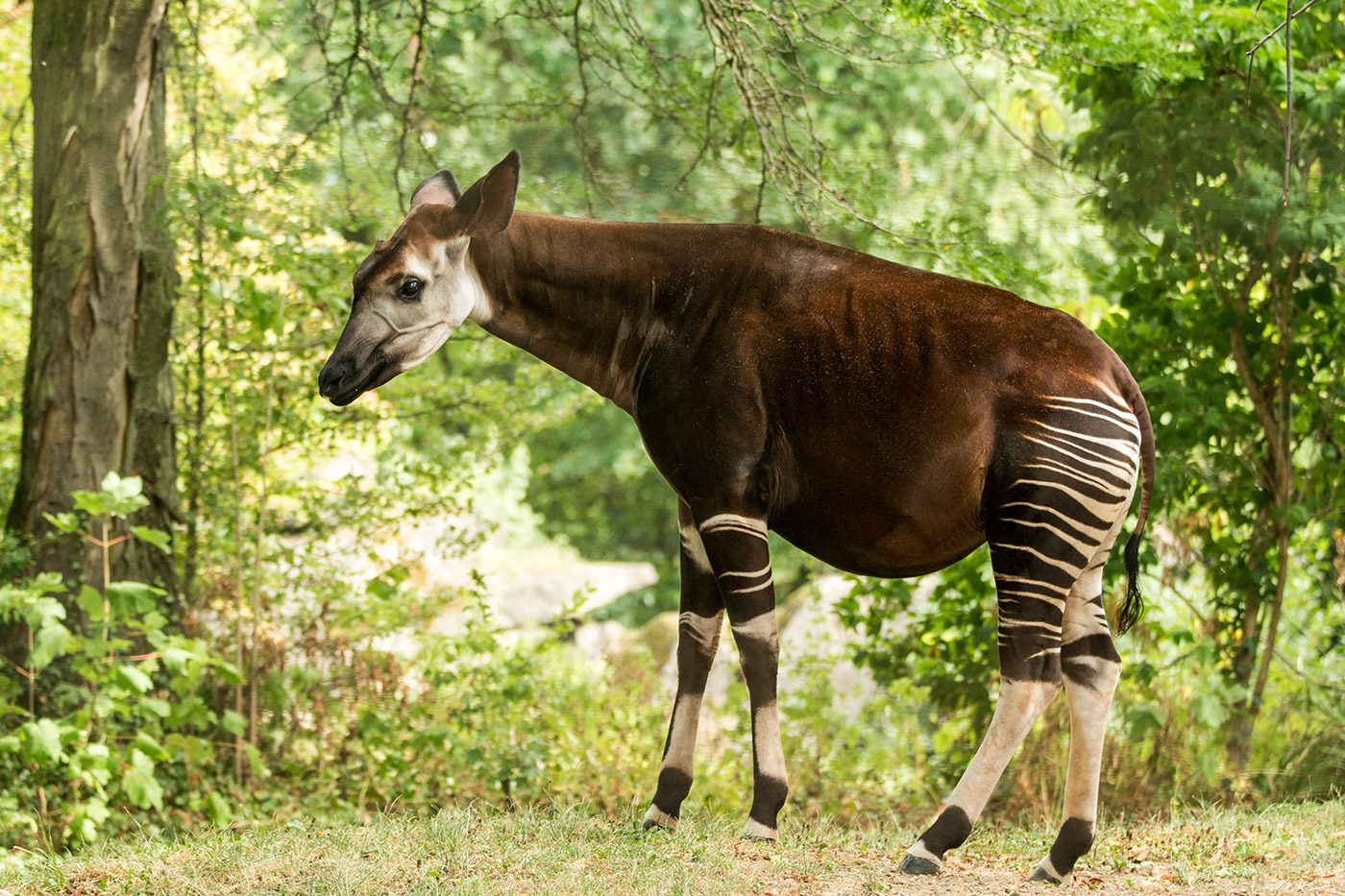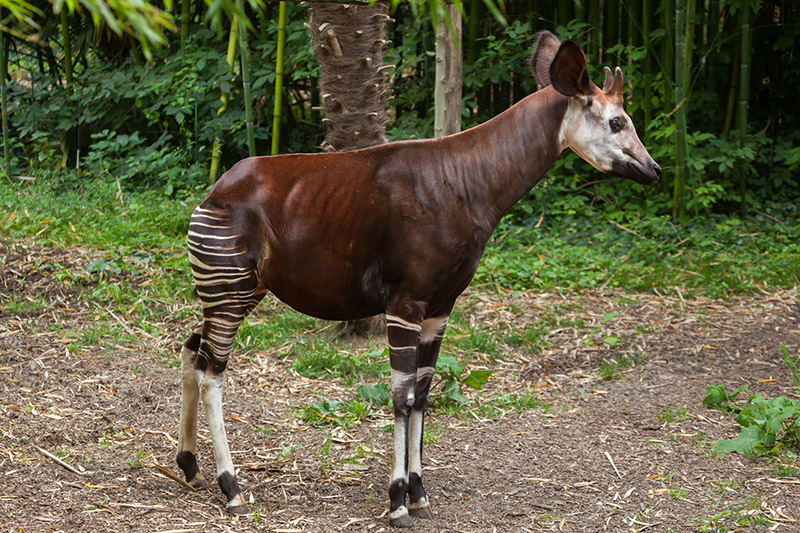Okapi
(Okapia johnstoni)

The Democratic Republic of the Congo, near the Congo Rive
Quiet and vigilant, we live in the dense canopy forests and river basins, primarily northeast of the Congo River and further north in the Ituri Rainforest.
About me
Despite our horizontal, zebra-like stripes, we’re actually the closest living relatives of the giraffe. Much like giraffes, we eat lots of food with our long tongues, digesting it with our four stomachs.
We have close ties with the Mbuti and Efe people, hunter-gatherers who regard the forest as both a protector and provider, and avoid eating us. Habitat loss, hunting and mining, and genocidal violence threaten our endangered species and the Indigenous people we’ve coexisted with for tens of thousands of years.

Fast Facts: Did you know?
We’re careful and secretive: our stripe patterns actually offer us ample camouflage in the low and scattered sunlight that makes it through the forest canopy.
While we bleat and whistle, we can also communicate in low-pitched calls, inaudible to humans and predators alike.
The rainforests of the Amazon, Congo, and Indonesia are our last best line of defense against the biodiversity and climate crisis. But 17 corporations are making massive profits by driving their destruction and the violation of human rights. That has to end NOW.
Why I want to Keep Forests Standing
The Congo rainforest is the only place in the world where we can be found, so if we lose the forest, we’ll disappear forever. And the same threats that Indigenous communities are facing threaten us too — especially because our habitat has been protected by Indigenous people for centuries.
We’re already hard to find and keep track of, so estimates of our population are difficult to make — but scientists and conservationists know that our population is endangered. The safety and natural resources that the Ituri Rainforest has provided to its people and its animal populations is no longer guaranteed.



 The Democratic Republic of the Congo, near the Congo Rive
The Democratic Republic of the Congo, near the Congo Rive